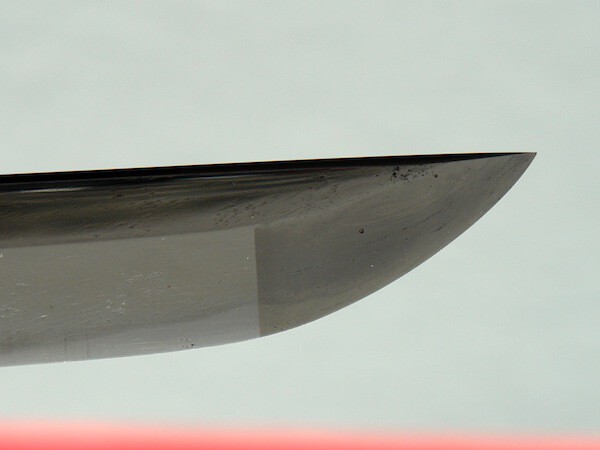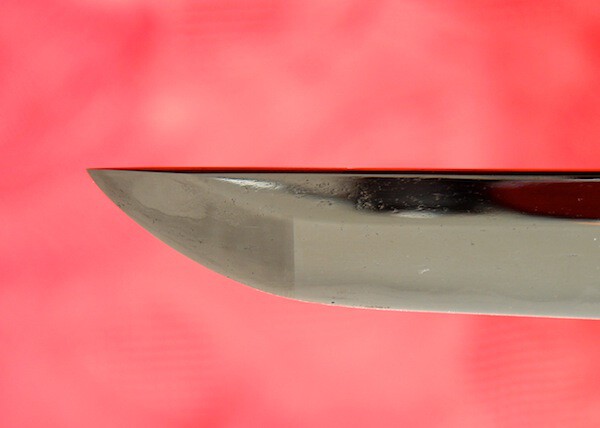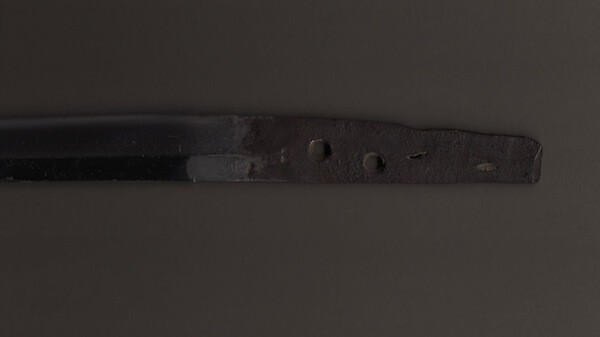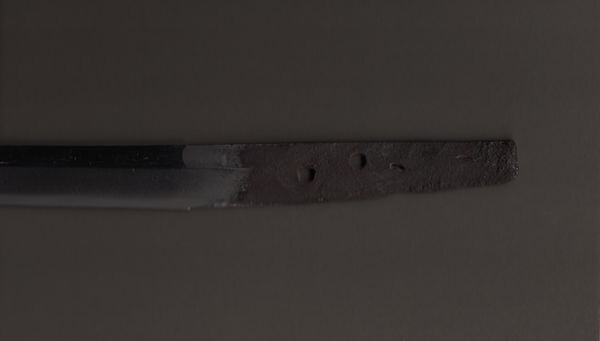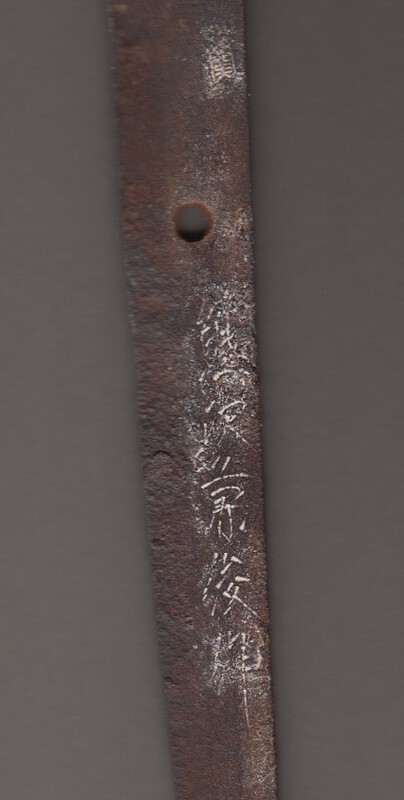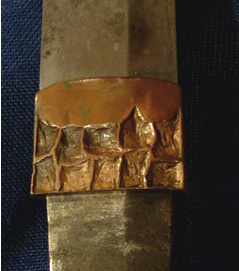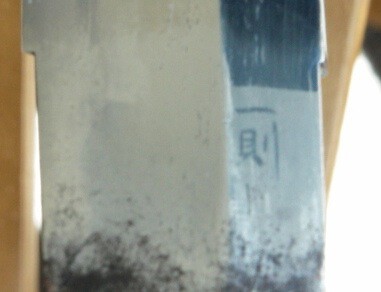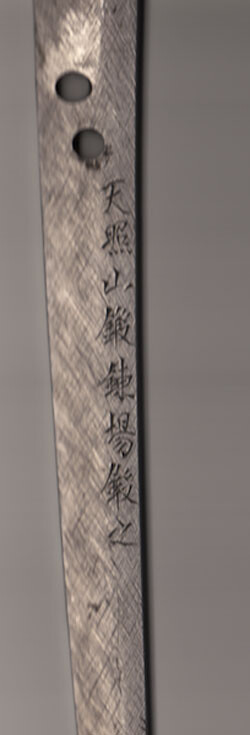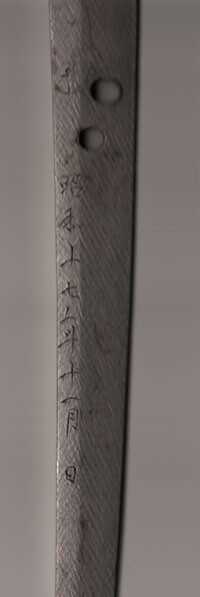-
Posts
1,066 -
Joined
-
Last visited
-
Days Won
6
Content Type
Profiles
Forums
Events
Store
Downloads
Gallery
Everything posted by Dr Fox
-
Hi again Geraint Unfortunatly the link provided, didn't give me the info you were eluding to, but your response was noted and accepted, and led on from the thoughts I had. my thanks to you. Hi Paul And again, I can see the value in what you are saying, but just to clarify a point, sale or generally increasing the swords cash potential is not the primary reason for my enquiry. Am I missing something not to have modern shinsa? Would I get confirmation of Smith? or more precise dating, or would the Hozon paper read exactly the same, but be now a different colour! Should that be the case, its a definite no no, to spend any monies in this direction. Thanks both for your time. Denis.
-
Hi members. I have an unsigned blade, which has got a Tokubetsu Kicho, issued in 1972. The paper attributes the sword to Echizen Kanetane. The Kicho system was replaced in 1980 by the current Hozon, so these papers are no longer issued. It has been suggested, that the NBTHK encourage those that have Tokubetsu Kicho, to resubmit the swords to modern shinsa. Although I find the prospect of such a move delightful, I am mindful I live in the UK, and this could be an expensive undertaking. The value of the sword is approx £5,000.00. I ask, what would be the gain to me, for submitting the blade to shinsa , please advise on all aspects of such a course of action. Regards Denis.
-
I posted a reply on this thread earlier, can't see where its gone? No matter, this is a very, very nice find. Congrats. Denis
-
Just an enquiry as to the nakago-tsuka fixing, the sarute passes through the retaining bolt? as on the copper tsuka models! Ok got that, but this sword does not seen to have any keyways, or flats to allow easy removeal! how does that work? The sarute doesn't double up as a mekugi surely. What have I missed? Denis
-
Hi Bill Puzzled at the title "Very rare prototype NCO sword" Quote: This totally mass-produced copy of the officers shin-gunto was introduced, it is thought, in 1933 or 1934 and issued to NCO's as a regulation requirement. The most distinctive feature is the hilt, which is a complete cast aluminium (sometimes brass) copy of the officers pattern. Well detailed, it is painted to represent the normal coloured binding and same. the seperate plain copper fuchi bears the Koishikawa Kokura arsenal symbol. Brass aoi-shape or, occasionally thin blackened-iron tsuba are used with only two seppa. The painted olive green steel scabbards have one ashi and a fixed shoe. A spring clip, affixed to the top edge of the hilt, passes through the tsuba to engage with a throat fitting and retain the sword in the scabbard. Leather combat covers are rarely fitted, but may denote usage by a senior NCO, or Warrant officer when found" Military swords of Japan. Fuller and Gregory. Picture examples Page 38 Plates 49 + 50 Page 40 Plates 51 + 52 Note Plate 52 is a leather combat covered example. (an edit here) Re-reading my post, it could be taken that the book reference, be used to class the sword under discussion. Not at all, it was to indicate the difference from the norm. What a great find, and a brilliant conversation piece. Denis.
-
Thanks Jean also Brian. I have made a pigs ear on this subject before, thanks for your patience. Trying again with blade pictures. I think its worked. Regards Denis.
-
Hi Geraint 3 postings from me in order but of course backwards on the board lol, not my day. Cheers Denis.
-
Please regard these posts as being in a reverse order. This is no 3 Now the blade has a pleasant look, and presents itself as elegant. There I stop! before the Gods of excellence rise up and devour me lol. No one can say with any certainty what has happened here, so should you feel able to kick this around, be my guest. Regards Denis,
-
This post is number 2 Its saya is wood with a leather cover. With one obi-tori. The blade is in recent polish, with a reed style habaki, its size at 22 ¾ suggests it an o-wakizashi or a kodachi (pick me up on this) Remove the tsuka and horror, what has happened here? It appears that the nakago has been hammered to reduce its width, crushing the old ana in the process, why would it have been too wide to start with?
-
This post is number 1. I have posted this in the Gunto section, as the blade has not been formally identified as to period. This sword came to me, and cost me no money. I accepted it purely out of its quirky overall appearance. The fittings are supposing a military background, but with a few weird twists. The Tsuka, is a same over wrap(not the tidiest) and has a plain iron loop sarute, with a company officers blue/brown cord. Where the sarute enters the kabutogane are two discs, both discs read Tsuba Maker* ??? The Menuki look to be standard Gunto.
-
George I sit in background and follow the posts on site, and in truth George you never fail to assist, there are very few times, that your input has not been offered, so from me it is valued and I thank you for it. Regards Denis.
-
Hi I have been asked to have a look at, and give some idea as to a description of a Gunto sword. This sword was brought back to the UK, from Burma at the end of WW11. It seems to be all standard for a date of 1942. It has remained intact since then, and has been allowed to R.I.P! (Rust in Piece) The assemble numbers on the Tsuba, Dai-seppa and Seppa,s match at the number 12. Straight forward to there then. The Seki stamp can be seen on the Nakago, but as to the Kanji I could use help. The rust on the Nakago was pretty advanced, I don't think I can achieve a better result with the kit I have, for a better photo. So I don't expect an absolute result. But I will thank you for any response. Regards Denis.
-
Hi all Wow this thread has opened more doors than it closed. For me it all comes down to what you can afford, collecting and preserving art swords of any age, is without doubt a very expensive undertaking. For me to be able to be the ‘caretaker’ of a nihonto until quite recently was just a dream. Due to a windfall this dream could be realised. Did I know enough to buy at auction, no, the same applied to a private buy. I visited a dealer in London who himself is Japanese, and spent time on my purchase of not one, but two swords, both swords are in Japanese polish, having been imports from Japan by this gentleman. My point being! Trust, trust of being placed in the hands of someone, you have been convinced will serve you well. Both my blades are in ‘old polish’ could I afford a re-polish perhaps not, would I commit these to a non Japanese polisher, I don't think so. Nothing elitist here, the soul of the samurai, deserves to go home. Is the value of a blade in its market price? Or is it in the pride of ownership, of something so individual, so visually pleasing, and so importantly historic. If it's the former, then my blades are worthless compared to some. If it is the latter, then my swords are indeed priceless in my eyes. Denis Age 68.
-
Hi Mauro Thanks for your reply, and yes I can see what you are indicating here, it was the reference to the ships propeller that did it. Denis
-
Guys Just a stab in the dark here, in 2007 we had a visit from Abe Kazunori, a sword polisher of some fame. a. Is the mei definitely 'Kazunori'? b. Are there any examples of his signing amongst members? Denis.
-
Thanks George I looked at the mei and wondered if the enclosure would be for 2 characters, but for the life of me I can't see it clearly, it might turn out to be when offered choices of kanji it could be seen to be there. Denis.
-
-
Hi Bazza Following up on your comment, "Otherwise I think all of those I've seen (very few, actually) have been the signature on a plain surface." I thought at some time I had seen a mei on one of my swords. And yes there it was! It is on the opposite side to the nagashi, and yes on a plain surface. Tried as best I could to get a decent image (scanner was a no no) Is this one a polishers Mei? Denis
-
Thanks Chris I had been told it was the definitive stamp for the Koa Isshin blade, and that is why I have never seen one as it is an early mark. And Bruno thanks for your input, it is an M and not a W. the M straddles a section of railway line,i.e. as looked at end on. If I had known this has been covered this forum Stamp/crest on a gusto. Wed 23 June 2010. By Arnaud. Cheers Denis.
-
Hi Roy Do all the Manchurian blades carry a stamp of an M straddling a cross section railway line? Denis.
-
Is it an age thing??? I don't know my Tiff from my Jpeg and now my cms from mm. I don't think I should be trusted with anything sharp, lol. Yes it is mm, and thanks for looking after me. Denis.
-
Hi David I must apologise to you for not replying sooner, been away. Tsuba measures north to south 80 cms east to west 72 cms Edge 3 cms. Cheers Denis.
-
Brian, Thanks no wonder I tried to ages to upload, Tiff versus Jpeg, I should have known better. Regards And to you Chris, just the answer I was hoping for, definite conformation. Cheers both. Denis.
-
Hi again everyone, Can you help to confirm or correct my findings please. A good friend of mine bought a 'Mantetsu' sword, set up in full naval Kai-Gunto, with a ray saya, clear lacquered. As pretty as a picture, he has shown it to me, and I asked why he called it a Mantetsu blade, it was because he was told that, and it was made out of railway lines. Well I don't think it is! Here's what I think, the anchor stamp on the nakago is not a Naval acceptance stamp. I have seen this stamp before and always on swords made at the Tenshozan Taren-jo forge in Kamakura Japan. The anchor is the workshops trademark stamp, and they produced dress swords exclusively for the Navy. Now I am right or wrong depending on the Tachi-mei translation, can you help please. Best regards Denis.
-
Thanks Roy Cheers Denis.





